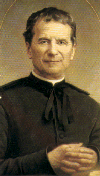This week, February 15, we are watching movies and initiating discussion on
film as text.What film?The Dr Who special
DoubtStargateThe CardinalWhat discussion?Be Your Own Film Critic discussion questions ~
Image—What We SeeIn what spaces or locations did the filmmaker choose to shoot the scenes? (indoor, outdoor, daytime, nighttime, real life building, stage set...)
What objects or staging elements help to tell the story? (props, costumes, wardrobe, backgrounds, furnishings, special effects, models or miniatures...)
What moves during the clip? (actors, props, background, lighting, the camera...)
The clip was screened on a flat television screen but appears to have depth? Why?(placement of foreground and background elements, relative size and brightness of objects, focus changing from one part of the picture to another...)
How would you describe the lighting in the clip? (bright, dark, shadowy, changing, colorful, muted, gloomy, realistic, other-worldly...)
Why are some characters seen in close-up more often than others? What does camera framing tell us about the characters? (close-ups and/or prominent placement in foreground denotes importance, wide shots give "geography" of scene, low angles suggest a threat...)
Sound—What We HearHow many separate types of sound appear in the clip? What are they? (dialogue, music, sound effects, natural sounds...) How many are heard at one time?
How would you describe the sound of this clip? (bright, dark, lively, solemn, rich, sparse, harmonious, dissonant . . .)
If you close your eyes and listen to the clip can you describe what's going on?
How did the filmmaker use microphones and sound equipment creatively? (using a variety of musical instruments, distortions, rising or falling volume, combinations of sounds, use of silence...)
How do the different elements work together to create a sound atmosphere? (one sound louder than another, off-screen sounds, musical moods, dramatic emphasis, sound traveling from one speaker to the other...)
Organization—How It's Put Together
How many times do the pictures change in the clip? What kinds of techniques does the filmmaker use to make the changes? (fade to black, dissolves, special effects, revealing detail, action continuing from one picture to another . . .)
How did time pass in the clip? (time was expanded or compressed, real "clock" time, slowly, in a rush...)
How would you describe the rhythm and pacing of the clip? (fast, slow, changing, building, descending, soothing, discordant...)
How did the filmmaker build suspense and interest in the story? (music, locations, tempo, dialogue, character and story development...)
Did the filmmaker put the pictures and sound in a logical order to tell the story? (sequence, timing, balance, believability...)
Expressive—How We FeelWhat feelings did you experience while watching this clip? What elements contributed the most to these feelings?
Do you think people act in real life the way they do in the film? (stereotyping, realism...)
What kind of people might react negatively to this clip? What kind of people might react positively to it? Why? (women, minorities, certain nationalities...)
What might have influenced the filmmaker in making this film (personal experience, ethnic origin or nationality, political point of view...)
If you were to make a film on a similar subject or story, what would you do differently? What would you do the same?






